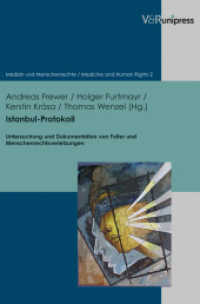Full Description
This book provides an overview and analysis of the role that classroom interaction plays in instructed second language acquisition. The authors synthesise current state-of-the-art research on how classroom interaction benefits L2 learning through the lens of three theoretical perspectives: cognitive-interactionist (with a focus on how conversational interaction may promote L2 processing and learning), sociocultural (which assumes that cognitive advances are located within social interaction) and language socialisation (which examines how learners position themselves and are positioned in social interaction, and how they establish their membership in the target language community). They go on to critically examine how findings from this research can be applied to classroom practice in diverse L2 settings; they then provide pedagogical implications and suggested teaching activities to support L2 teachers and teacher educators in harnessing the benefits of classroom interaction for L2 learning.
Contents
Figure and Tables
Chapter 1. An Introduction
Chapter 2. Interaction in Classroom Settings: A Theoretical Account
Chapter 3. Second Language Instruction and Classroom Interaction
Chapter 4. Input and Output in Classroom Interaction
Chapter 5. A Role of Corrective Feedback for SLA
Chapter 6. Peer Interaction in Instructed Settings
Chapter 7. Technology-Enhanced Classroom Interaction
Chapter 8. Learner Engagement in Classroom Interaction
Chapter 9. L1 in Classroom Interaction and SLA
Chapter 10. Learner and Teacher Beliefs About Classroom Interaction
Chapter 11. Language Socialisation and Ethnography in the L2 Classroom
Chapter 12. Reflections and Thinking Ahead
Addendum: Classroom Teaching Activities
References
Index







